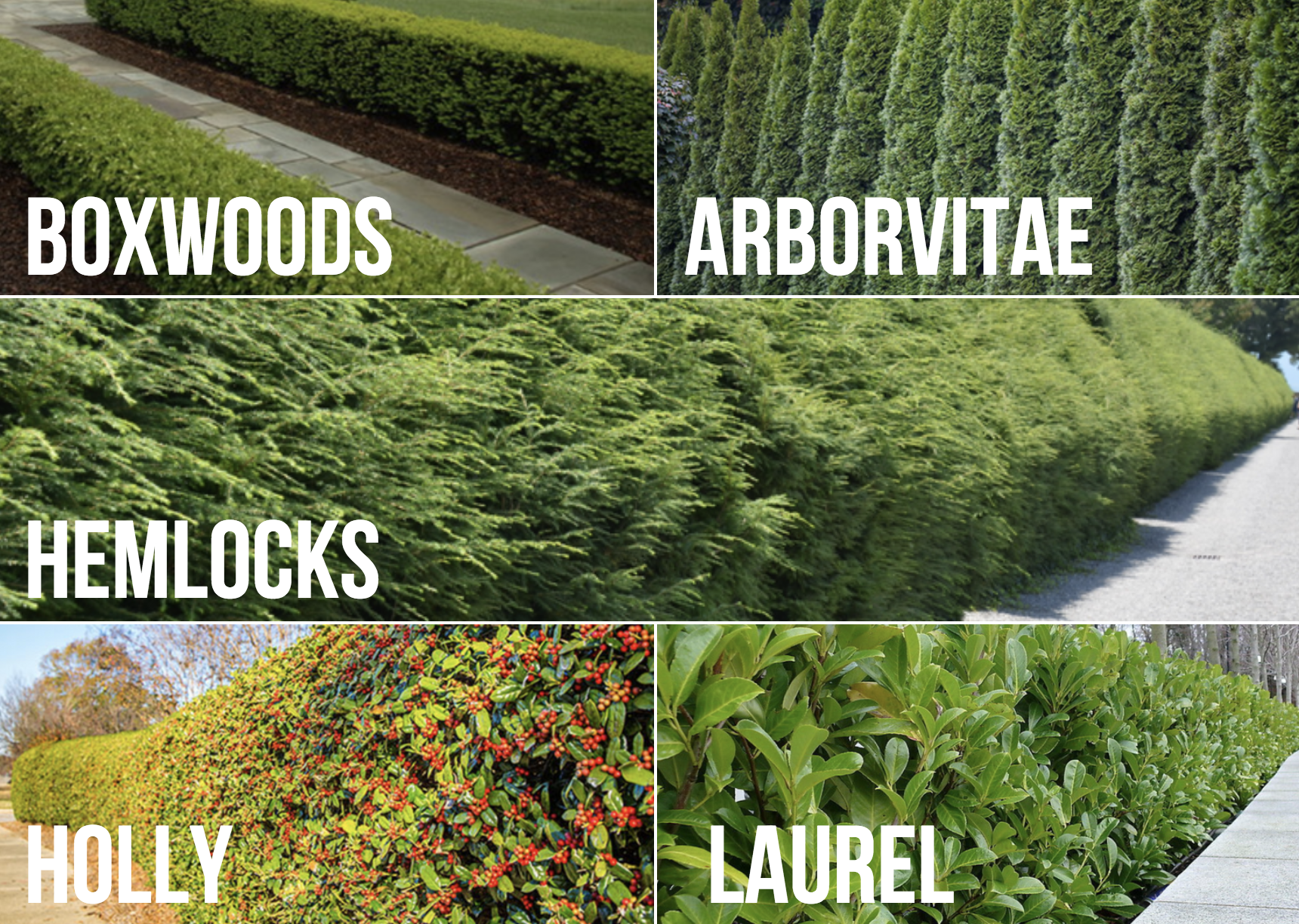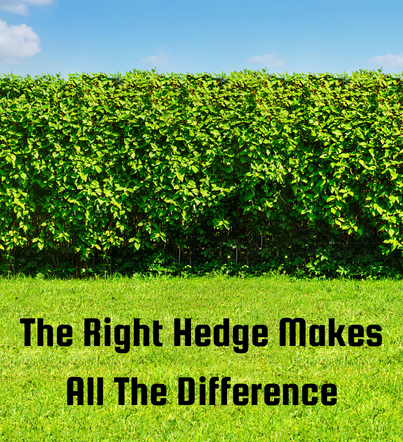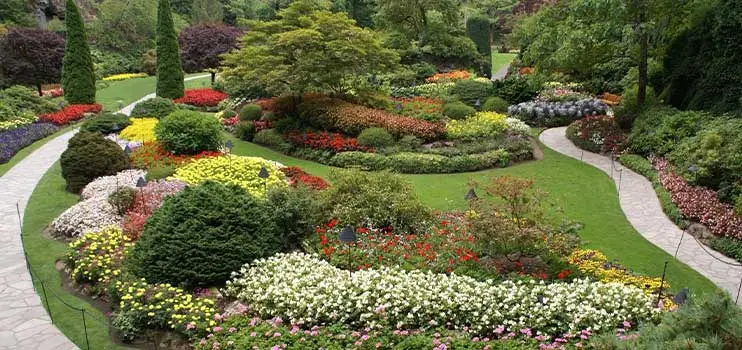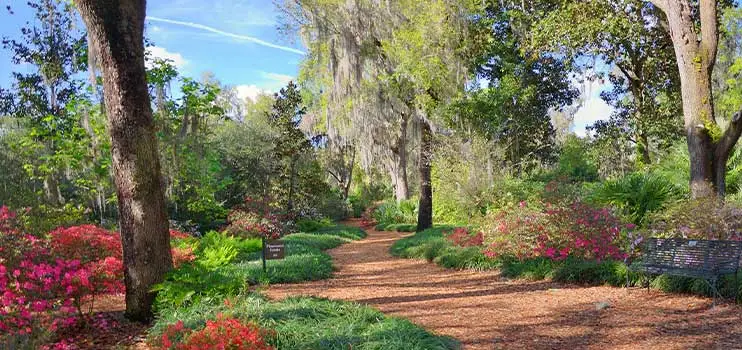
Hedges or Hedgerows are any shrubs, trees or plants placed in a close-knit line to form a barrier. In fact, the word hedge dates back over 800 years from the Old English language, and simply means, ‘enclosure’.
While their original function was to mark property boundaries, over time, they have grown to serve many different uses such as blocking wind from smaller adjacent crops, providing privacy such as a ‘Live Fence’ or as an artistic design element.
If you are thinking about adding hedges to your landscape, it’s important to understand the many different features and needs of each variety. Let’s take a closer look at the more popular hedges we see used today:
BOXWOODS
Close your eyes and imagine a formal garden. Chances are, you are envisioning boxwoods! These are the most commonly used hedges for topiaries, mazes and pathway borders. Their tidiness and ease of maintenance make it a favorite just about everywhere it grows. If boxwoods are your shrub of choice, take the time to do your research. There are many different varieties of boxwoods, some that do better in full sun and some that can withstand strong winds. Selecting the wrong variety could result in bronzing, which is probably not the look you are going for. Learn more about boxwood problems in our previous post, “Why Are My Boxwoods Turning Brown?”
ARBORVITAE
Native to North America, these evergreens are hardy and grow to a height of 12-14ft with a spread of 2-3ft. Because of their height, they make great privacy hedges. These evergreens are not drought resistant, in fact they thrive best in moist and swampy soils. There are several pests that like to make arborvitae their home, and it’s important to inspect often, because if left unnoticed, Spider Mites or Bagworms can cause irreversible damage.
HOLLY OR ILEX
Also part of the evergreen family, Holly is another popular choice for hedges. Popular for good reason, it is fast growing, easy to prune and stays green year-round. Holly’s most distinctive features are their dark-green glossy leaves and red berries which show up in winter months. There are hundreds of different varieties of holly, so similar to boxwoods, be sure to do your research before planting. Some of the more modern varieties are very good at resisting diseases and insect infestation.
LAUREL
With a growth rate of approximately 2 feet per year, Laurel is well known for being the fastest growing hedging plant, but that’s not all, they are also the cheapest! Laurel leaves are rounded, glossy, bright green and look great all year round. They can be trimmed into formal box-shaped hedges or they can be left more natural for a less formal looking hedge. They really are beautiful and can grow in nearly any light or soil types. If left untrimmed they will grow to about 18 feet tall.
HEMLCOCKS
Hemlocks are a slow-growing evergreen that when trimmed and maintained properly can make a wonderful privacy screen. Their elegant and wispy leafage give them a soft and natural look. It’s one of the few evergreens that can handle full sun and full shade. The first thing to note about these beauts, is that if left untrimmed, they will grow up to 80 feet tall, so it’s important to constantly be trimming and pruning. Also, they are very susceptible to mites and insects, so be sure to get them sprayed several times a year.
These are really just the tip of the iceberg when it comes to hedge options, there are hundreds of different species and varieties to consider. Whether you are trying to replicate a formal English garden, or just plant a few smartly places conifers for privacy, it is always important to consult an arborist before ordering your plants and trees. As mentioned above, each variety has a unique makeup with unique needs, and the best first step to take is always a Plant Site Analysis.










